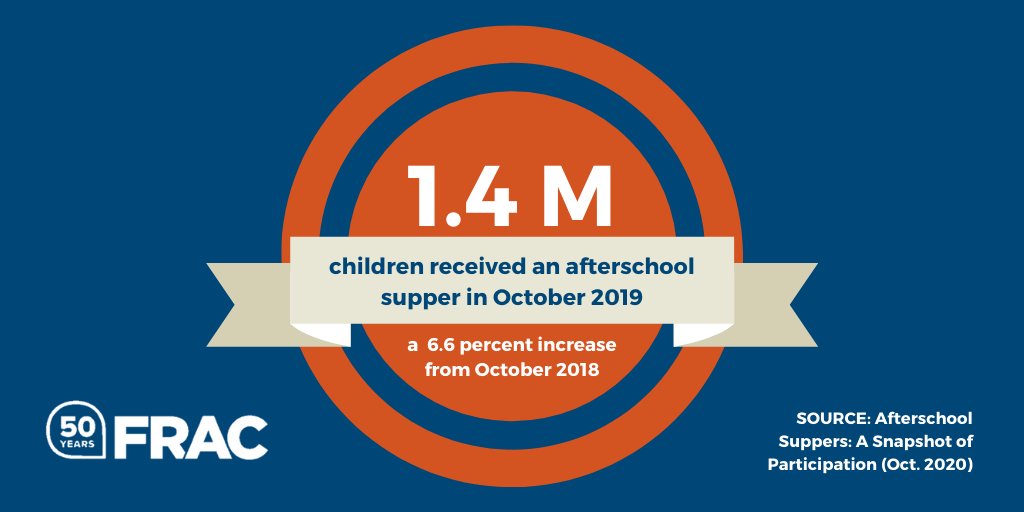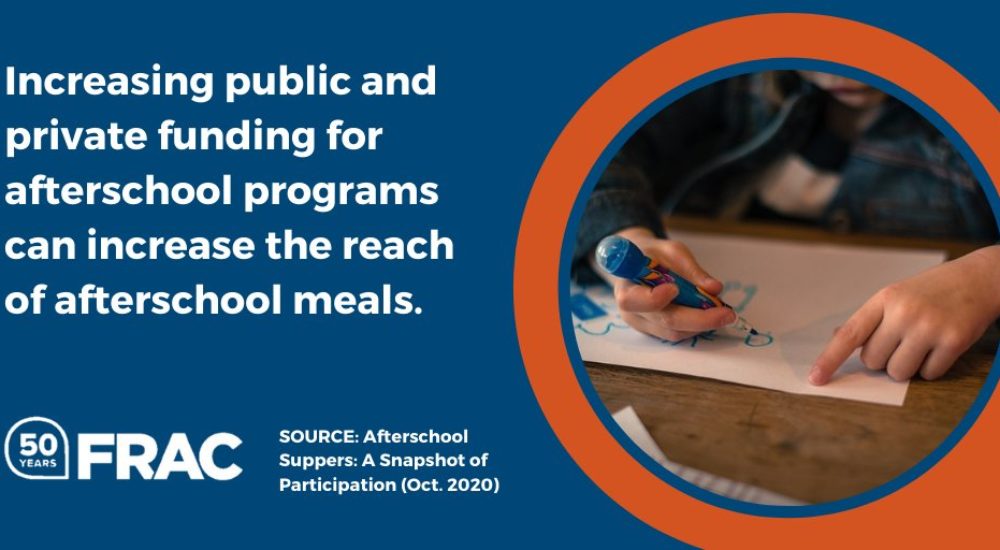As communities continue to respond to COVID-19, one thing is increasingly clear: the hours that children are “out of school” have been increasing, and afterschool suppers and snacks alongside afterschool programs are becoming more essential than ever.
The federal Afterschool Nutrition Programs provide funding to serve suppers and snacks to children alongside educational and enrichment programming, offering a solution to the nutritional and opportunity gaps that exist for too many students after the school day ends. The meals and snacks help draw children into those educational and enrichment activities, which support academic achievement and provide much-needed child care for working parents.
FRAC’s recently released report, Afterschool Suppers: A Snapshot of Participation, finds that over 1.4 million children received a supper through the Afterschool Nutrition Programs in October 2019, an increase of 6.5 percent, or 86,900 children, from October 2018. Almost 48,000 afterschool programs across the country provided a supper, a snack, or both through the Afterschool Nutrition Programs in October 2019, an important indicator of access to afterschool nutrition.

To ensure continued access to afterschool suppers and snacks during COVID-19, the U.S. Department of Agriculture (USDA) has issued flexibilities that allow the Afterschool Nutrition Programs to adapt to the new normal created by the pandemic. USDA has extended important waivers through the 2020–2021 school year, including:
- eliminating the area eligibility requirement so that afterschool meals and snacks can be offered in every community;
- allowing families to take one or more afterschool meals and snacks home for consumption;
- and providing flexibility around meeting the enrichment activity requirement virtually or at home.
The Afterschool Nutrition Programs and the afterschool community have been a critical part of the response to COVID-19, and will remain so as communities continue to recover, but additional work is needed and policies need to be strengthened to ensure that low-income children have access to afterschool meals. Learn more about expanding access to afterschool nutrition here.
The Food Research & Action Center (FRAC) has resources to help you learn more about the Afterschool Nutrition Programs, determine if your program is eligible, and identify successful strategies for implementing them.
For breakfast today I had eggs and toast.
Author: @clarissahayesfrac
